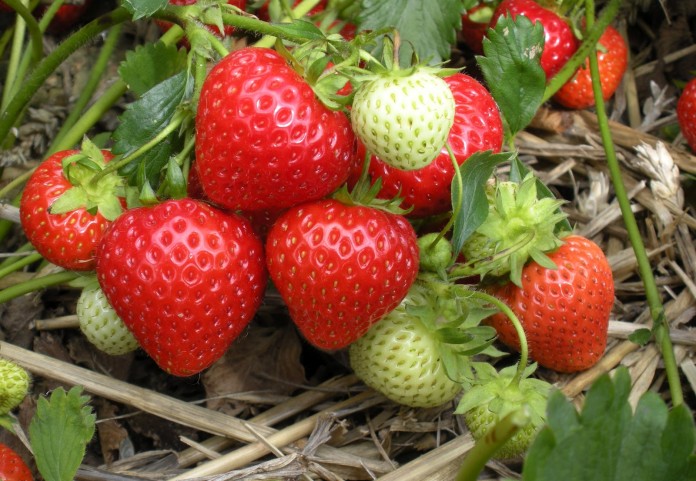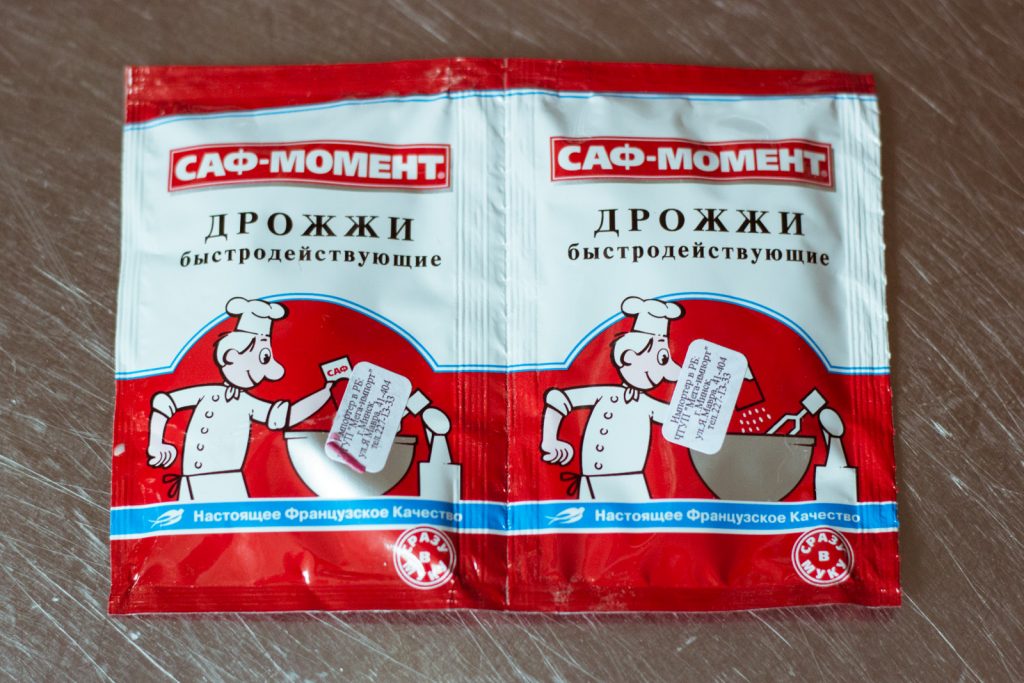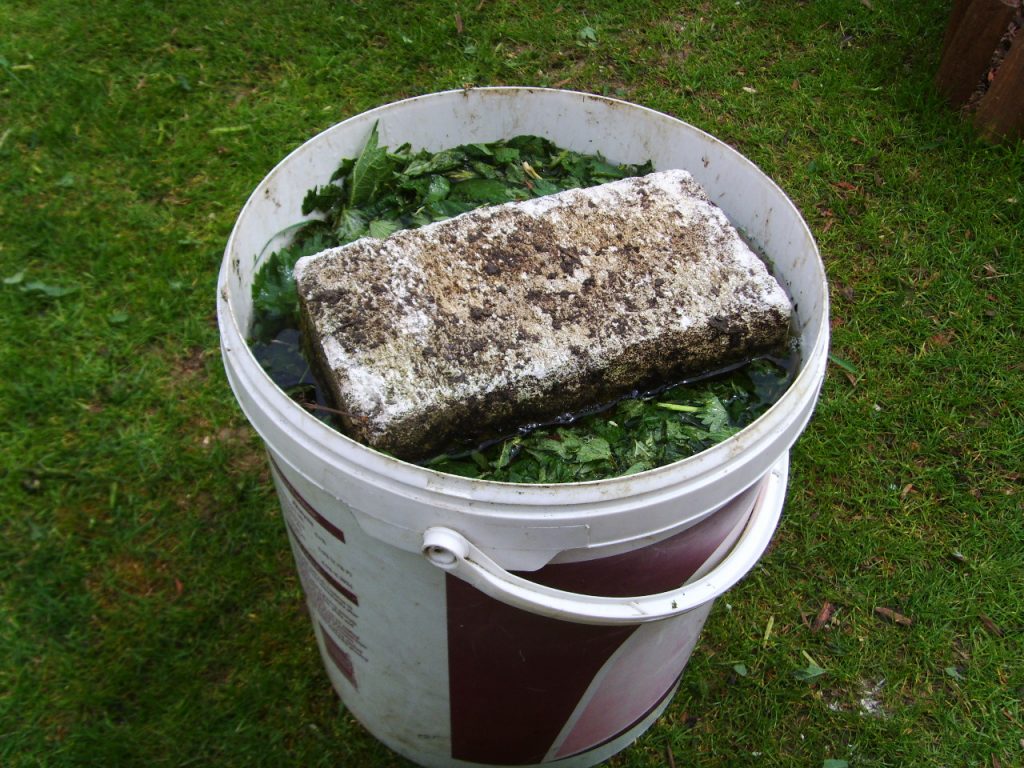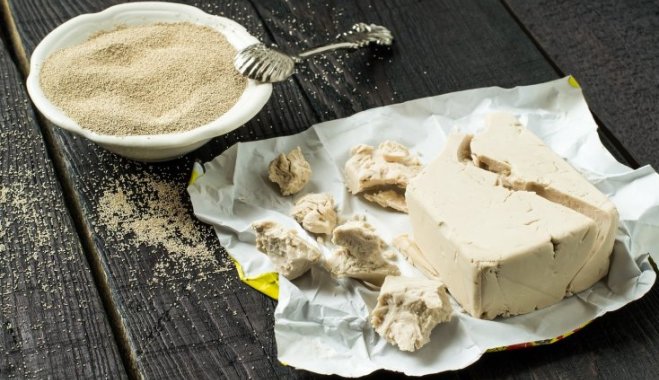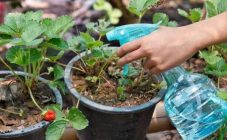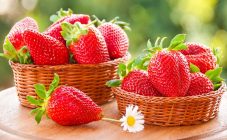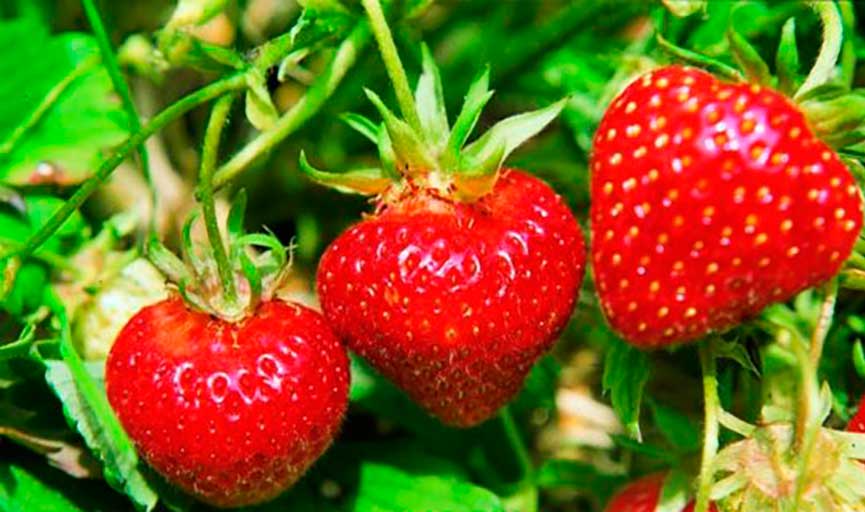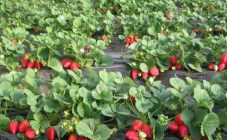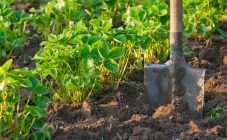Content:
Strawberries are a delicious, aromatic, healthy and favorite berry of adults and children. However, garden strawberries (strawberries) are often sold in the market and in the store, which are grown with the use of a large amount of chemical fertilizers. Therefore, if there is an opportunity, it is still better to grow it in your own garden.
Strawberry growing conditions
Garden strawberries are not particularly whimsical, they can be grown on any soil, but in order to get the maximum yield, it is necessary to create optimal conditions for the development of the plant.
It grows best on black soil, worst of all on salt marshes or limestones. The acidity level of the soil should be in the range of 5.5-6.5.
The berry will be as sweet and large as possible in sunny and well-ventilated areas located on the southwest side.
Bushes do not like stagnant water, therefore, if you took a place located in the lowland for planting bushes, then planting should be carried out on piles or earthen hills.
Good predecessors are:
- radish and radish;
- beans and peas;
- mustard;
- parsley;
- garlic.
You shouldn't grow a vegetable like a tomato on an area where it is planned to break strawberry ridges next year. Also, the predecessors should not be potatoes, cucumbers, sunflowers or Jerusalem artichoke.
Feeding strawberries with yeast
Timely feeding of garden strawberry bushes will allow them to develop well, lay a large number of peduncles and get large and sweet berries.
Fertilizers are applied in two ways:
- root top dressing (watering under a bush);
- foliar feeding (spraying or irrigation).
Many gardeners use yeast as fertilizer for strawberries. You can also feed plants with tinctures on bread and breadcrumbs.
The following types of yeast are used in cooking:
- fresh;
- bakery;
- dry;
- granular;
- fast-acting;
- beer.
Why yeast is good for you
They include proteins, carbohydrates, nitrogen and fats, potassium, phosphoric acid, B vitamins, micro, - and macronutrients. In addition, the starter culture contains plant growth hormones: cytokinin and auxin, which stimulate cell division, as well as an increase in their size.
Instead of yeast tincture, you can use special EM preparations such as "Baikal" or "Renaissance", which, in addition to yeast, include lactic acid and other bacteria.
Yeast Fertilizer Advantages
This type of feeding has advantages over other types:
- - the resistance of bushes to the effects of diseases and adverse conditions increases;
- - is an environmentally friendly, inexpensive and easy-to-prepare fertilizer;
- - fertilized plants after transplanting quickly take root in a new place, while strawberry bushes have a strong, developed root system;
- - the growth of the aerial part of the strawberry bush is activated;
- - can be used both for root and foliar feeding;
- - the fruiting of bushes occurs earlier than without the use of nutrient solutions.
Thanks to the ingress of yeast into the soil, beneficial microorganisms that are in it begin to multiply faster. When processing organic matter in the soil, nitrogen and phosphorus are released in large quantities, which are easily absorbed by plants.
Fertilization timing
During the growing season, it is recommended to carry out three yeast dressings for strawberries.
The first time the yeast solution is applied when flowering begins. This period begins around the end of April (depending on the region).
When summer comes, strawberry bushes begin to bear fruit, and it's time for a second feeding. At this time, in addition to yeast, you can use chicken manure or herb infusion. If a remontant strawberry variety is grown, then fertilizing can be done 2 times per summer.
Autumn has come, the time has come for the third feeding. At this time, the harvest has already been fully harvested, and the bushes must be prepared for wintering.
Foliar dressing can also be used during these periods. For this, the working solution is sprayed with a spray bottle over the leaves of garden strawberries.
Features of feeding at different periods
The type of fertilizer is selected depending on the fruiting period.
How to feed strawberries in spring with yeast? During the period of budding and flowering, it is best to use fertilizer prepared on the basis of dry or other types of yeast. Here, the plant needs nitrogen fertilizers, and yeast actively release nitrogen and phosphorus during its life. Therefore, an excellent feeding option during this period will be watering with a yeast solution, which can be prepared on the basis of dry yeast.
During fruiting, there is a large consumption of potassium by plants. But yeast also consume a lot of it. Therefore, in order not to impoverish the soil in the content of potassium and calcium, it is advisable to add ash under the bushes after watering with a nutritious yeast mixture, since ash is an excellent fertilizer that quickly restores the content of these elements in the soil.
How to properly prepare a solution
Making fertilizer from yeast does not take much time, labor and financial investment. The nutrient solution can be prepared using the following recipes.
Recipe 1
You will need 1 kg of compressed yeast and 5 liters of water.
Yeast is diluted in warm water and infused for an hour. The result is a cloudy, light-colored solution.
Recipe 2
1 tbsp. l. dry yeast, dilute in 5 liters of warm water and add 2 tbsp. l. Sahara. Let it ferment for 2-3 hours. It turns out a concentrated solution, which must be diluted in a ratio of 1:10 before watering.
Recipe 3
You can prepare a nutritious infusion based on 1 bucket of chopped green weeds (nettle is better), 1/2 kg of pressed yeast, 0.5 kg of black bread rusks.
All ingredients are placed in a 70 l barrel and filled to the brim with warm water. Fertilizer is prepared within 3 days. After preparation, the solution must be filtered and then fertilized. This fertilizer does not need to be diluted.
Recipe 4
Fill a 10 liter bucket into 1/3 with stale bread crumbs. Add 1 liter of kefir or sour milk, 0.5 liter jar of jam, 0.5 liter of chicken manure, 1 small packet of dry yeast. The cooking time is about 1 week. Before you water, you need to dilute the stock solution in a proportion of 1 tbsp. 10 liters of water.
To activate the fermentation process, it is advisable to stir the solution periodically.
Which solution is best to use and during what period? In principle, a mash prepared according to any of these recipes can be used at any time of fertilization, however, during fruiting, it is better to prepare a ferment according to recipe No. 3, since it additionally uses weed infusion.
Fertilizer for strawberries in the spring based on yeast is best prepared according to recipes No. 1 and 2.
If you use brewer's yeast instead of baking yeast, then the maturation time of the solution will decrease, since with their use the fermentation process is faster. But in this case, it will be necessary to use it as soon as possible, since fermentation, accordingly, stops faster.
The correct yeast solution must meet the following rules:
- It must be fresh. It cannot be harvested for future use, as this will lose its effectiveness.
- The water used to prepare the mother liquor must be warm, as hot water will kill the yeast.
- The leaven can only be used when the ground is already warm. If it gets into cold ground, yeast will die.
- When preparing mash using bread or crackers, do not use moldy products.
Fertilization rules
There are certain rules for feeding garden strawberries growing in open ground with yeast solutions. Only by observing them, you can get the maximum benefit from the applied fertilizers. How to feed strawberry bushes with yeast:
- You need to fertilize the plants in the evening or in cloudy weather.
- Before carrying out root dressing, it is imperative to first water the area with water. This will prevent burns on the plant.
- Water the area with a warm solution.
- Do not abuse the amount of dressings, concentration and application rates of the solution.
- If you decide to fertilize the site with dry yeast, then they cannot be applied directly under the bush, without first dissolving it in water. This not only will not give a positive effect, but also harm, since a large number of different insects will appear on the plantation, which will come to eat the yeast, and at the same time damage the strawberry bushes.
- Before planting young plants in open ground, their roots can be dipped for 6-8 hours in yeast starter culture. This will contribute to better survival of the bushes in the garden.
- When using root fertilization, it is desirable that the mash does not fall on the leaves.
- If complex feeding is performed with mineral fertilizers and yeast starter culture, then it is better to apply the mash some time after the mineral fertilizers have been added. In this case, the fungi neutralize excess mineral salts in the area.
Answers on questions
Often gardeners and gardeners who are just going to use the mash as fertilizer ask questions about whether it is possible, in addition to strawberries, to fertilize other berry and vegetable crops with yeast starter cultures.
Fertilization of vegetable crops with yeast
The experience of carrying out such dressings shows that almost all crops respond well to the application of this fertilizer. In principle, it can be called universal.
When feeding with sourdough, the plants stretch up less. If you treat the seedlings transplanted after a pick with it, this will increase the survival rate of young plants.
To prepare a yeast dressing for tomatoes and peppers, you can use the following recipe: 100 g pack of pressed yeast, 5 tbsp. l. sugar, 1 tbsp. dilute the ash in 10 liters of warm water.
Dissolve yeast in water and add the rest of the ingredients. Fertilizer can be applied in 2-3 hours. The leaven does not lose its properties within 2 days.
Before adding the mother liquor is diluted 1:10.
Watering is carried out either in the evening or in cloudy weather. Before fertilizing, the area must be pre-watered.After fertilizing, you can also water the bushes. The consumption rate of yeast starter culture is 0.5-1 l (depending on the size of the plant) per bush.
In addition to adding sourdough under the strawberry bushes, you can use these solutions to accelerate the maturation of the compost.
Preparing a compost starter
At the beginning of August, solutions are prepared in two containers:
- for the first solution, take 200 g of dry yeast, which is diluted in sweetened warm water;
- in the second, the packaging of Fitosporin-M is also diluted in warm water.
Then both liquids are combined and left to mature for 2 days.
Also, the question often arises of whether it is necessary to feed the plants with ash after the mash and why it is needed.
Feeding strawberries with mash and ash
So that when using yeast feeding, the amount of potassium and calcium in the soil does not decrease, it is advisable to carry out complex yeast and ash feeding. Ash can be applied after watering the plants with mash or simultaneously with it.
The correct use of yeast starter culture for feeding garden strawberries will increase the quantity and quality of the harvest of this valuable and tasty berry.
